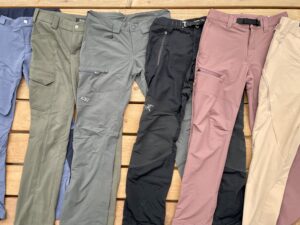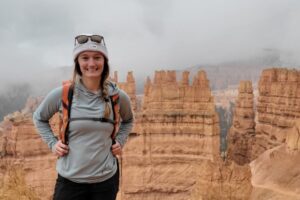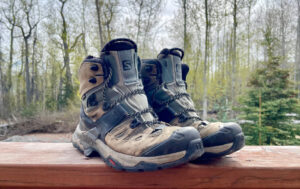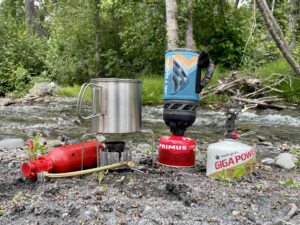No matter what activities you enjoy outside, sunscreen should be a critical piece of your day-to-day self-care and your outdoor gear kit. Skin cancer is the most common cancer in the United States, with one in five Americans developing skin cancer in their lifetime. One of the main risk factors is excessive UV exposure and sunburn. While everyone is at risk of excessive UV exposure, people who spend a lot of time outdoors hiking, biking, skiing, and swimming are at a higher risk simply due to the duration of exposure.
Thankfully, one of the easiest ways to mitigate this is by consistent use of sunscreen. Sunscreen protects you from harmful rays, and consistent sunscreen use has been shown to prevent sunburns and premature aging.
While there are plenty of sunscreens on the market to choose from, some are better than others. To help you pick the right sunscreen for you, we tested a dozen sunscreens over the course of two years, wearing them as our daily protection, trying them at the beach and while hiking, and using them to protect our tattoos. Gear Editor Chelsey Cook also tested several products on the high-altitude glaciers of the Alaska Range, where the sun is relentless and sometimes shines for over 20 hours a day.
From our extensive testing, we chose a range of mineral- and chemical-based sunscreens, in lotion, face stick, and spray applications for the best sunscreens of 2024. We prioritized sunscreens that were easy to apply, offered good protection, didn’t irritate our skin, and were healthy for the environment. All of the sunscreens on this list are water-resistant and offer broad-spectrum protection.
Editor’s Note: We updated this guide on May 10, 2024, to ensure our product selection and buying advice were up to date with 2024’s sunscreen market. We also added superlatives such as Best Face Stick Sunscreen, Best Spray Sunscreen, and Best Sunscreen Chapstick. We updated the Best-Reef Safe from Badger SPF 35 Sport Mineral Sunscreen to Badger SPF 40 Sport Mineral Sunscreen after additional testing.
Our picks for the best sunscreen of 2024
- Best Overall Sunscreen: Sun Bum Original SPF 50 Sunscreen
- Best Reef-Safe Sunscreen: Badger SPF 40 Sport Mineral Sunscreen
- Best Face Stick Sunscreen: Sun Bum Mineral SPF 50 Face Stick
- Best Mineral Sunscreen: Coppertone Sport Mineral Sunscreen SPF 50
- Best Tinted Sunscreen: Amavara Tinted Mineral Sunscreen SPF 50
- Best Scented Sunscreen: Alba Botanica SPF 45 Sunscreen Lotion
- Best Spray Sunscreen: Supergoop! PLAY SPF 50 Body Mist
- Best Sunscreen Chapstick: Sun Bum SPF 30 Lip Balm
Best Overall:
Sun Bum Original SPF 50 Sunscreen
Features:
- Dermatologist recommended
- Moisturizing with added vitamin E
- Sweat- and water-resistant
- Reef friendly
- Broad spectrum protection from UVA and UVB rays
- Vegan and cruelty-free
Why We Like It: Easy to apply and rub in, nongreasy feeling, smells great
What We Don’t Like: Comes in a large container that isn’t easy to pack away
Active Ingredients: Avobenzone, Homosalate, Octisalate, Octocrylene | Water-Resistant: Yes, 80 minutes | Reef Friendly: Possibly | Size: 8 ounces
Sun Bum Original SPF 50 Sunscreen ($18) is our pick for the best overall sunscreen. It’s Chelsey’s go-to sunscreen for summer adventures, and she loves how easily it spreads and blends in, making application on her legs and arms quick and easy. Our tester Kirby uses it as her daily sunscreen to protect her tattoos.
Sun Bum Original SPF 50 Sunscreen is water-resistant, nongreasy, fragrant, and has added vitamin E to leave your skin feeling soft. It’s paraben-free, cruelty-free, vegan, and hypoallergenic, and our skin didn’t break out after repeated uses. While it is considered reef-safe under Hawaii’s sunscreen law, it contains octocrylene, which the Coral Reef Alliance does not recommend for use in the ocean.
It does come in a large bottle that isn’t the greatest for stashing in a backpack. Chelsey transfers some to small travel tubes, like the GoToob+ Squeeze Bottles before heading out on any day hikes or backpacking trips. Read Kirby’s in-depth review on Sun Bum Original SPF 50.
Best Environmentally Friendly Sunscreen:
Badger SPF 40 Sport Mineral Sunscreen
Features:
- Made with 98 percent organic ingredients
- Clear zinc for easier application
- Certified reef safe
- Only includes four ingredients
- Packaged sustainably in a 50 percent PCR tube
- Broad spectrum protection
- Vitamin E and sunflower oil added to moisturize
Why We Like It: Organic, reef-safe ingredients that offer great sun protection
What We Don’t Like: Thick, difficult to apply
Active Ingredient: Zinc oxide | Water-Resistant: Yes, 80 minutes | Reef Friendly: Yes | Size: 2.9 ounces
Badger SPF 40 Sport Mineral Sunscreen ($18) is replacing our previous Best Reef-Safe Sunscreen, Badger SPF 35 Zinc Oxide Sport Sunscreen after more testing because of the additional SPF protection. This sunscreen is one of Chelsey’s favorite sunscreens on personal expeditions involving glacier or snow travel because it is thick and very protective, containing 22.5 percent zinc oxide. It’s also a very environmentally friendly option, with only four, mostly organic, ingredients. It’s reef-friendly, cruelty-free, and made with solar power. Badger, a family-owned brand, added sunflower oil, beeswax, and vitamin E to soothe and moisturize your skin.
Because of the high zinc oxide content, this sunscreen is thick and a little hard to apply. It often leaves a white residue, but it’s worth it if maximum protection is your main objective.
Best Face Stick Sunscreen:
Sun Bum Mineral SPF 50 Face Stick
Features: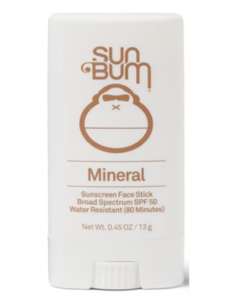
- Easy to apply face stick
- Broad spectrum sun protection
- Free from paraben, mineral oil, silicone, and dyes
- Hypoallergenic
- Vegan and cruelty-free
- Tiny container for easy travel
Why We Like It: Easy to apply on the go, small enough to stash in your pants pocket
What We Don’t Like: Difficult to spread when cold, leaves a white film on skin if not rubbed in
Active Ingredient: Zinc oxide | Water-Resistant: Yes, 80 minutes | Reef Friendly: Yes | Size: 0.5 ounces
Sunscreen face sticks look like little deodorant sticks and contain sunscreen in a solid form. They’re incredibly easy to apply; take off the cap, roll up some sunscreen, and rub the stick on your face. Chelsey swears by this quick, no-mess sunscreen option and her favorite is the Sun Bum Mineral SPF 50 Face Stick. ($13.50) Containing 19 percent zinc oxide, it’s a surprisingly powerful sunscreen in a tiny container. Chelsey keeps it in the pocket of her soft-shell pants while traveling on the glaciers of Alaska, and likes that she can quickly apply it one-handed while moving on a rope team. It’s also a great option for on-the-go applications while hiking or paddling.
The solid sunscreen can be difficult to apply if it gets cold, so Chelsey keeps the stick in a pocket close to her body to keep it warm.
Best Mineral Sunscreen:
Coppertone SPF 50 Sport Mineral Sunscreen SPF 50
Features:
 Budget-friendly mineral-based option
Budget-friendly mineral-based option- 100 percent naturally sourced zinc oxide
- Broad spectrum coverage
- Paraben-free and dye-free
- Hypoallergenic and friendly for sensitive skin
Why We Like It: Spreads easily, particularly for a zinc oxide-based sunscreen
What We Don’t Like: Like many mineral-based sunscreens, it doesn’t smell the best
Active Ingredient: Zinc oxide | Water-Resistant: Yes, 80 minutes | Reef Friendly: Yes | Size: 5 ounces
While we like that mineral sunscreens are all-natural, zinc oxide is infamous for spreading like cream cheese and leaving a white film on your face. We like Coppertone’s SPF 50 Sport Mineral Sunscreen ($19 for a two-bottle bundle) because it’s easy to apply and barely leaves a white sheen on your skin, which fades quickly once fully rubbed in.
Coppertone uses 100 percent naturally sourced zinc, and the sunscreen is dye-free, paraben-free, and hypoallergenic. It’s also less expensive than many other sunscreens we tested, making it a great budget-friendly option for people wanting to try mineral-based sunscreen.
Best Tinted Sunscreen:
Amavara Tinted SPF 50 Mineral Sunscreen
Features:
 Tinted mineral sunscreen
Tinted mineral sunscreen- Broad spectrum protection=
- 100 percent non-nano zinc oxide
- Vegan and cruelty-free product
- No artificial colors
- Great for sensitive skin
Why We Like It: Easy to apply, tint provides coverage and smoothes complexion
What We Don’t Like: Expensive for a small amount of sunscreen, only one tint
Active Ingredient: Zinc oxide | Water-Resistant: Yes, 80 minutes | Reef Friendly: Yes | Size: 1.65 ounces
Our tester Kirby wears Amvara Tinted SPF 50 Mineral Sunscreen ($25) on her face every day. She rarely wears makeup and prefers this lotion to add some color and coverage to her face while protecting her skin from the sun. She’s found that she can even apply this sunscreen when sweaty or wet, making it easy to throw on after washing her face in the morning or after the gym.
Protecting your skin and protecting the earth go hand in hand, and Amvara does both equally well. Their commitment to the environment includes post-consumer recycled packaging, a vegan and cruelty-free product, and reef-safe ingredients. Read Kirby’s in-depth review on Amvara Tinted SPF 50 Mineral Sunscreen.
Best Scented Sunscreen:
Alba Botanica SPF 45 Sunscreen Lotion
Features:
 Refreshing green tea scent
Refreshing green tea scent- Easy to apply
- Contains aloe to soothe skin
- 100 percent vegetarian formula
- Never tested on animals
- Biodegradable formula
Why We Like It: Smells great, non-greasy, cruelty-free
What We Don’t Like: Leaves a white cast initially
Active Ingredients: Avobenzone, homosalate, octocrylene, octisalate | Water-Resistant: Yes, 80 minutes | Reef Friendly: Possibly | Size: 3 ounces
Due to its pleasing scent and ease of application, Alba Botanica SPF 45 Sunscreen Lotion ($11) is one of Kirby’s favorite sunscreens. She likes that it applies easily and smells great. It also contains refreshing aloe vera, to soothe your skin, and is paraben-, phthalate-, and petroleum-free.
Alba Botanica never tests its products on animals and this sunscreen does not contain any animal byproducts. It does not contain oxybenzone, octinoxate, or gluten, making it technically reef-safe under Hawaii’s laws, however, it does contain octocrylene.
See Alba Botanica Sunscreen Lotion SPF 45 on Amazon
See Alba Botanica Sunscreen Lotion SPF 45 on Walmart
Best Spray Sunscreen:
Supergoop! PLAY SPF 50 Body Mist
Features:
 Spray sunscreen with non-aerosol application
Spray sunscreen with non-aerosol application- Acai and green tea extract to nourish skin
- Cruelty-free and reef-friendly
- Sweat- and water-resistant
- No white cast
- Bag-on-valve technology allows you to spray at any angle
Why We Like It: Non-aerosol spray for air travel, easy application
What We Don’t Like: Barely enough for more than one full-body application
Active Ingredient: Avobenzone, Homosalate Octisalate, Octocrylene | Water-Resistant: Yes, 80 minutes | Reef Friendly: Possibly | Size: 3 ounces, 6 ounces available
Supergoop! Play SPF 50 Body Mist ($18) gained popularity through bright and clean social media marketing, and we decided to try the sunscreen for ourselves. The non-aerosol container spritzes a refreshing body mist sunscreen that is SPF 50. It also contains green tea extract, acai extract, and vitamin C to refresh and protect your skin. The brand uses environmentally friendly packaging and never includes oxybenzone or octinoxate, making it reef-friendly by some standards. It does contain octocrylene.
The sunscreen is very easy to apply, even in hard-to-reach areas of your body. Supergoop’s bag-on-valve technology also allows you to spray the body mist at any angle. We tested the three-ounce version, and while we liked it, the container is a little small for full-body application. We recommend the six-ounce bottle if you’re a heavy sunscreen user.
Best Sunscreen Chapstick:
Sun Bum SPF 30 Lip Balm
Features: 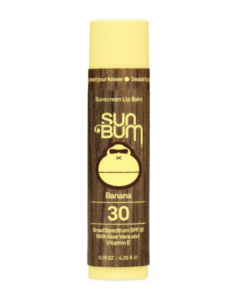
- Added aloe and Vitamin E for moisturizing
- Vegan, gluten-free, and cruelty-free
- Broad spectrum protection
- Multiple tasty flavors are available
What We Like: Tastes incredible, multiple flavors
What We Don’t Like: Thin texture feels like it needs frequent reapplication
Active Ingredients: Avobenzone, Homosalate, Octisalate, Octocrylene | Water-Resistant: Yes | Reef Friendly: Possibly | Size: 0.15 ounces
Your lips are just as susceptible to sunscreen as the rest of your skin, and it’s a good idea to wear chapstick with SPF anytime you’ll be spending the day outside. Chelsey carries Sun Bum SPF 30 Lip Balm ($4) on all of her expeditions and uses it as her daily chapstick, too. This sunscreen chapstick is almost tasty enough to eat and comes in a variety of flavors like banana, coconut, and watermelon. It goes on easily and doesn’t feel greasy on your lips. Sun Bum added aloe and vitamin E to keep your lips soft, even after a long day in the sun and wind.
Sun Bum also has a Mineral SPF 30 Sunscreen Lip Balm which we like, but it leaves a white cast and doesn’t taste as good.
About our testing process
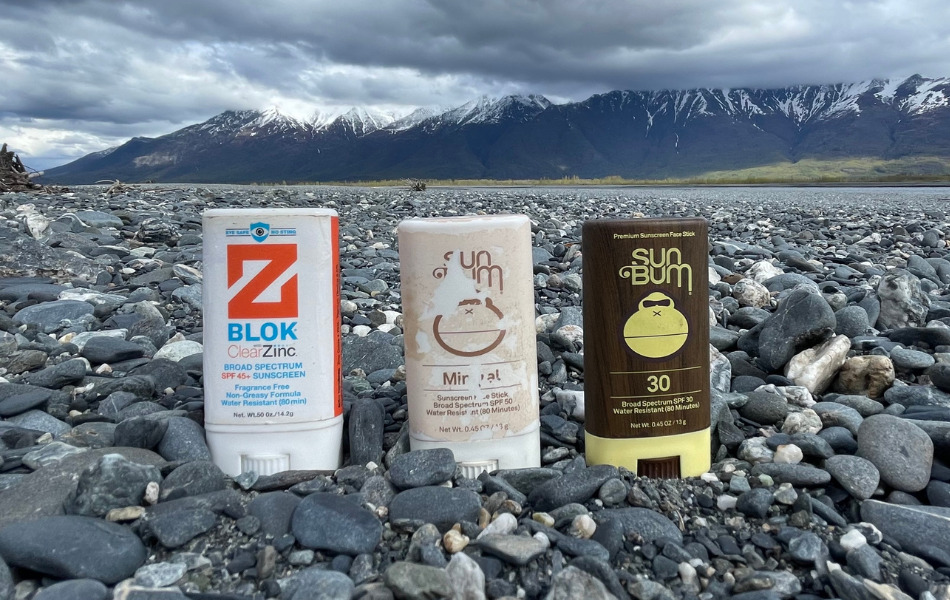
Face sticks during testing. Photo: Chelsey Cook
The ExplorersWeb team tested the sunscreens on this list over the course of two years, wearing them while working, adventuring, and going about our daily lives. We skied, hiked, climbed, gardened, and read in the sun. We sweated and swam and even got sunburned, all to find the best sunscreen on the market for your own outdoor adventures.
Ilana Newman started this guide in October 2022. When she’s not on the computer writing, you can find her outside running, rock climbing, skiing, and hiking. She’s also guided on a glacier in Alaska and worked for ski resorts, so she knows all too well the damage the sun can do when reflected off the snow. Sunscreen is a must for her, and she’s tested almost all of the sunscreens on this list and put hours into researching what makes sunscreens protective, good for your skin, and safe for the environment.
Gear Editor Chelsey Cook took over this guide in May 2024. She lives in Alaska where the sun literally doesn’t set in the summers, and has spent six years guiding high-altitude mountaineering in the Alaska Range and remote backpacking trips. When she’s not in Alaska, she’s usually traveling in other high-altitude areas of the world, including the Andes of Peru, where a thinner atmosphere makes UV rays much more intense.
After seeing several of her guiding friends get diagnosed with skin cancer and getting a scary, second-degree sunburn on her nose after summiting Denali one year, Chelsey takes her sunscreen seriously. Most days, you’ll find her wearing a ballcap and sun shirt with the hood pulled up, even in the front country. She’s tried most sunscreens on the market, and prioritizes sunscreens that spread easily, are long-lasting, protective, and gentle on her sensitive skin. She particularly likes face sticks, because they are easy to apply on the move and small enough to fit in her pants pocket. She tried five different ones in her quest to find the best one, testing them on glaciers and rivers.
Kirby Kahl also tested many of the sunscreens on this list. She spends much of her time outside and is heavily tattooed. UV rays break down tattoo ink, so she looks for sunscreens that offer the most protection.
After several years of testing sunscreens, we crafted this list of our top choices. We chose the sunscreens in this guide based on their SPF levels, their water- and sweat-resistance, and how safe they are for your skin and the environment. We also looked for sunscreen that was easy to apply and long-lasting.
All the sunscreens on this list offer broad-spectrum protection and are water resistant. They are also reef-friendly by Hawaii’s laws. We looked for mineral- and chemical-based sunscreens, as well as different-sized containers and different applications, from creams to face sticks to sprays. After extensive testing, we incorporated the best sunscreens we found for adults of all skin tones, genders, and ages.
Things to consider when buying sunscreen
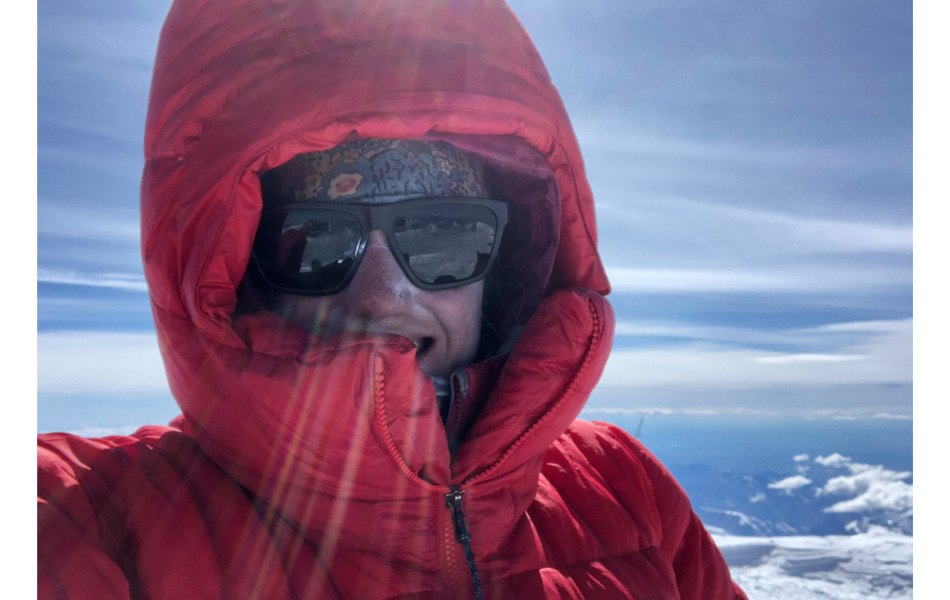
Chelsey Cook tests mineral-based sunscreens on Denali. Photo: Chelsey Cook
SPF
Sunscreens come in SPF options from 10 to 100, with higher numbers representing stronger protection. Dermatologists recommend sunscreen between 30 SPF and 50 SPF. Lower SPFs often advertise themselves as “tanning sunscreens,” and we don’t recommend them for outdoor use. Higher SPF sunscreens offer more protection, especially for activities involving water, snow, and sand, which reflect UV rays. However, the actual added protection between an SPF 50 sunscreen and an SPF 30 sunscreen is minimal.
Ingredients
Active ingredients in sunscreens are either chemicals or minerals. Mineral sunscreens provide safer, more natural protection, while chemical sunscreens often cost less and apply more easily. However, many of the chemicals may cause harmful effects on the environment and your health.
Sunscreens also come with a host of inactive ingredients. Some sunscreens include oils and extracts to help moisturize and soothe your skin.
Ease of application
Some sunscreens are easier to apply and blend in than others. Chemical-based sunscreens typically go on easily and rub in clear, while mineral-based sunscreens are thicker and may leave a white cast. Consider choosing chemical-based sunscreens for your daily-wear sunscreen, and using mineral sunscreen while hiking, backpacking, and skiing.
It’s recommended that sunscreen be reapplied every 2 hours. All the sunscreens on our list are also sweat- and water-resistant, which is an important factor to look for if you’re using sunscreen during outdoor activities.
Reef-Friendly
Good sunscreen should protect your skin and be healthy for both you and the environment. “Reef-friendly” and “reef-safe” are commonly used to describe sunscreen that is safe for the ocean, but they are not regulated labels. If you want to be sure you’re buying an environmentally friendly sunscreen, you’ll have to look at the active ingredients list.
Under Hawaii’s sunscreen laws, oxybenzone and octinoxate are banned because of their harmful impacts on marine environments, and none of the sunscreens on our list contain these chemicals. However, the Coral Reef Alliance also does not recommend octocrylene, which is in most chemical-based sunscreens. Octocrylene is thought to disrupt coral reproductive cycles, damage DNA, and exacerbate coral bleaching.
Mineral-based sunscreens, made primarily with zinc oxide, are generally reef-friendly.
Size
Sunscreens come in all different-sized containers. Look at how much sunscreen you are getting, and how much you are paying for that amount in comparison to other brands. Buying in bulk can save money, but having a smaller container is useful for traveling or stashing in your backpack.
Frequently Asked Questions

Should you wear sunscreen every day?
Yes, you should wear sunscreen every day to protect yourself from sun damage and skin cancer. Apply it in the morning and reapply throughout the day, even on cloudy days. Up to 80 percent of UV rays can penetrate through clouds.
Make sure to use more sunscreen and reapply more frequently when around sand, snow, and water as they amplify the effect of the sun.
How long does sunscreen last?
Sunscreen lasts for two hours or, if you have waterproof-resistant sunscreen, about 80 minutes after swimming or sweating. Reapply often, and double-check your sunscreen bottle to see if your specific product includes any additional information about how often to apply. Sunscreen also generally takes 15 minutes to bond with your skin after reapplication before it begins to work.
Is a higher SPF better?
Dermatologists recommend using a broad-spectrum sunscreen that is SPF 30 or above. However, SPF 50 offers only marginally better protection from UV than SPF 30. SPF 30 filters out about 97 percent of UV radiation, while SPF 50 filters out 98 percent, and SPF 100 filters out 99 percent.
What is the best sunscreen for your face?
We prefer to use sunscreens that are thin and non-greasy on our faces for daily wear, like the Sun Bum Original SPF 50 Sunscreen, or tinted sunscreen, like the Amvara SPF 50 Tinted Sunscreen. If we’ll be adventuring outside all day, we opt for a mineral-based sunscreen that is thicker but may leave a white cast.
You can also use SPF products such as foundation or moisturizer on your face that include SPF, but make sure that these products are SPF 30 or higher. Layering a foundation that is SPF 15 and a moisturizer that is SPF 15 does not equate to an SPF 30.
What’s the difference between chemical and mineral sunscreen?
Two common types of sunscreen include chemical and mineral sunscreen. Chemical sunscreen uses chemicals such as oxybenzone and avobenzone to create a chemical reaction. Upon exposure to the sun, these chemicals absorb the harmful UV rays, turn the rays into heat, and release them from your skin.
Mineral sunscreens protect your skin like a shield rather than a chemical reaction. Ingredients like zinc oxide and titanium dioxide reflect and scatter the sun’s rays before they soak into your skin.
Chemical sunscreens often absorb better than mineral sunscreens and mineral sunscreens can leave a white coating on your skin. However, mineral sunscreens are often better for the environment and the ocean.
What negative side effects can sunscreen have?
Sunscreen is vital to protect your skin from the sun, but it can irritate your skin. If you have sensitive skin, finding a sunscreen that doesn’t irritate your skin can be challenging. Sunscreen can cause acne, redness, burning or itchy skin, or dry skin.
There are some concerns regarding chemicals that have historically been used in sunscreens, including avobenzone, homosalate, octinoxate, octisalate, oxybenzone, octocrylene, and others. Studies by the FDA show that many of these chemicals are absorbed into the body after use and can be detected on the skin and in blood weeks after they have been used. The constant exposure to sunscreen chemicals may be concerning, as there is not yet enough safety data for most of these ingredients.
The FDA has recognized only two sunscreen ingredients, zinc oxide and titanium dioxide, as generally safe and effective.
What makes a sunscreen reef-friendly?
Two ingredients to avoid in sunscreens are oxybenzone and octinoxate. These ingredients were recently banned from Hawaii and Key West because they cause coral bleaching and are not great for your skin. Other sunscreen chemicals that may or may not be bad for your skin and the environment include avobenzone, octisalate, octocrylene, and homosalate. Research is not currently conclusive about these chemicals, but many environmental groups advocate not using them in the oceans. Some of these chemicals also have been known to cause hormone disruption through skin absorption.
Most natural sunscreens use minerals instead of chemicals to provide sun protection. The most popular mineral sunscreens use zinc oxide, which many people recognize from the white residue often left after application. However, many brands have found ways to reduce the ghost-like pallor of zinc, making zinc sunscreens more attractive to many customers.
How much sunscreen do I need?
Most adults need about one ounce, or the equivalent of a shot glass, of sunscreen to cover their face and exposed skin. If you’re at the beach, or wearing shorts or a tank top, you may need more. Also, be aware that sunscreen has its limits. Make sure to wear sun-protective clothing to help prevent sunburn and skin damage.
Sources:
- Skin Cancer – American Academy of Dermatology Association
- Sunscreen 101: Protect Your Skin and Coral Reefs – Coral Reef Alliance
- Sunscreen and Cosmetics Compound May Harm Coral by Altering Fatty Acids – Analytical Chemistry
- The Trouble with Ingredients in Sunscreens – Environmental Working Group

